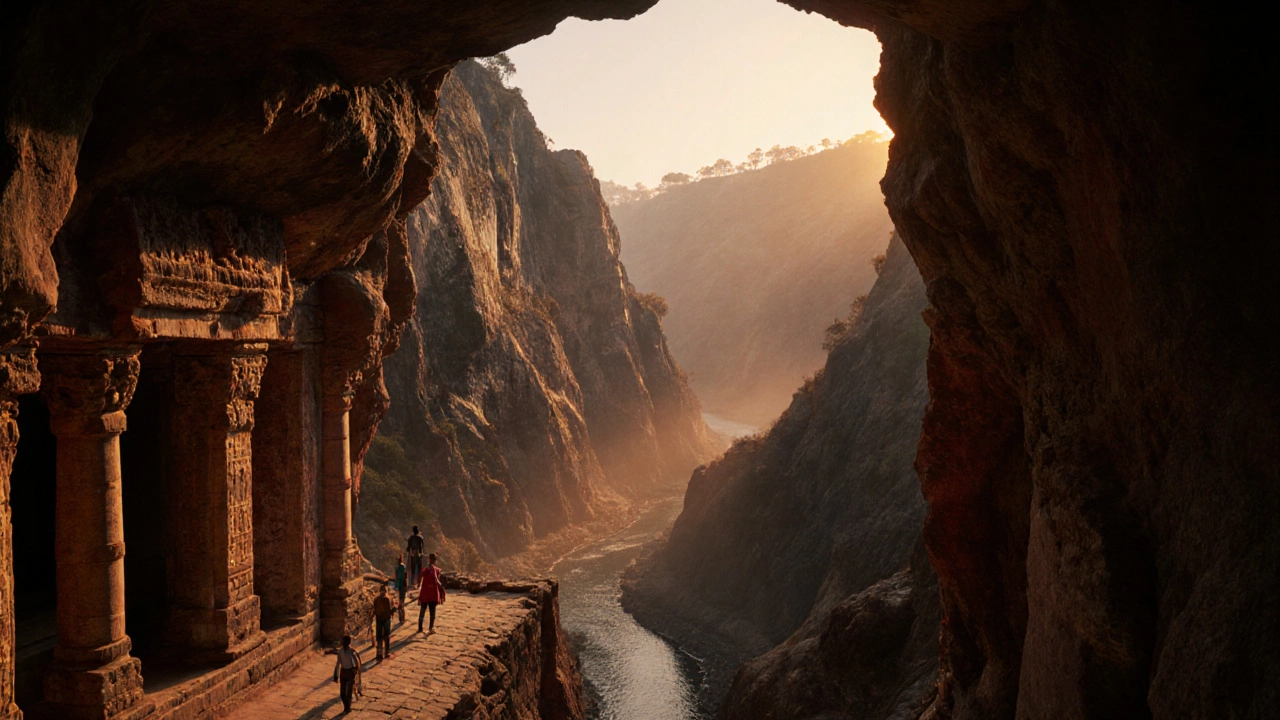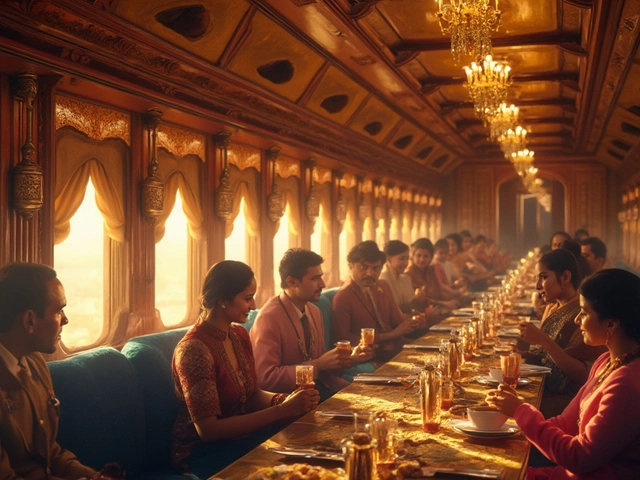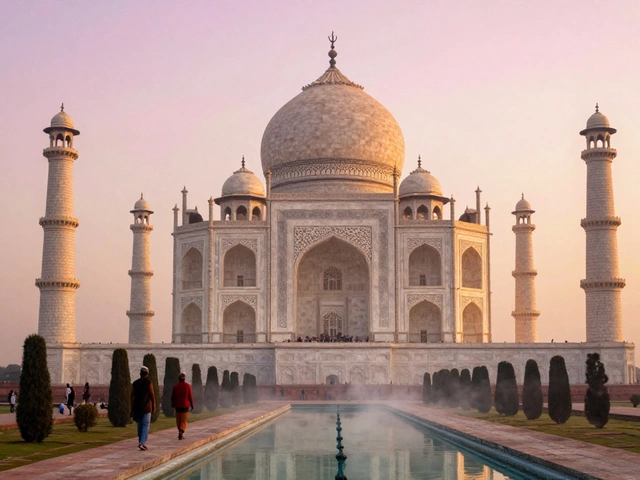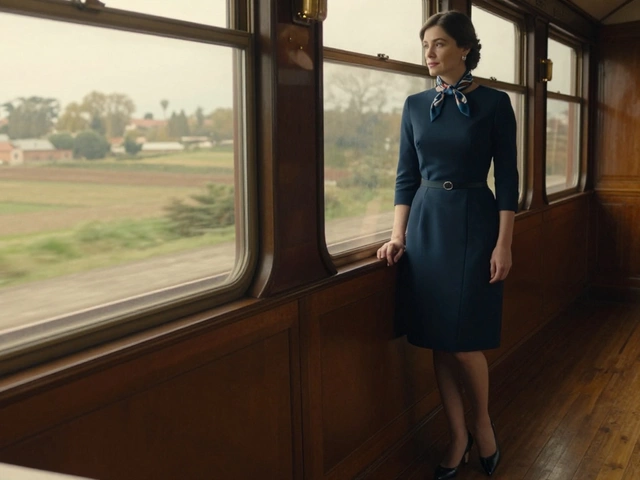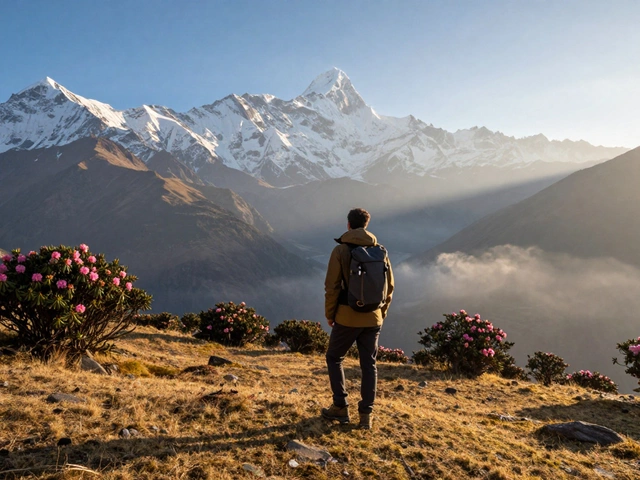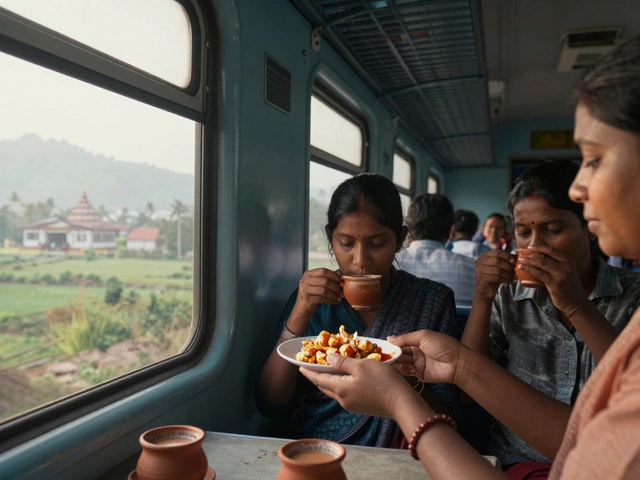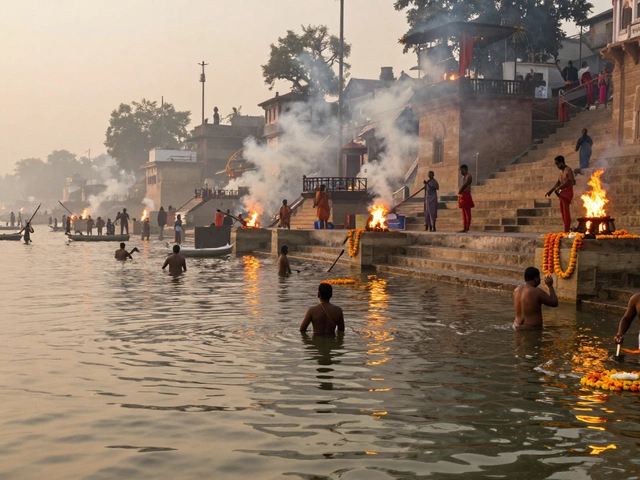Ajanta Caves Comparison Tool
Compare UNESCO Sites
| Comparison Metric | Ajanta Caves | Other Site |
|---|
When you hear oldest World Heritage Site India, the mind might race to the Taj Mahal or the forts of Rajasthan. But the real trail‑blazer is a series of rock‑cut sanctuaries tucked into a remote gorge of the Western Ghats - the Ajanta Caves are a UNESCO World Heritage Site that dates back to the 2nd century BCE and showcases some of the finest Buddhist mural art on the subcontinent. This article unpacks why Ajanta holds the title of India’s oldest WH site, how it compares with its fellow 1983 inductees, and what you need to know before stepping into its ancient chambers.
What Makes a Place a UNESCO World Heritage Site?
UNESCO evaluates sites against ten criteria, ranging from cultural masterpieces (criteria i‑vi) to natural wonders (vii‑x). For cultural sites like Ajanta, the focus is on authenticity, outstanding universal value, and the ability to illustrate a masterpiece of human creative genius. The Indian government, through the Archaeological Survey of India (ASI), prepares nomination dossiers that detail history, integrity, and management plans.
Ajanta Caves: Age, History, and Artistic Brilliance
Carved into a basalt cliff overlooking the Waghora River, the Ajanta Caves comprise 30 rock‑cut chambers split into two phases. Phase I (c. 2nd century BCE - 1st century CE) reflects early Hinayana (theravada) Buddhist worship; Phase II (c. 5th century CE) bursts with elaborate murals, sculpted panels, and grand vihāras (prayer halls). The oldest inscriptions, dated to 2 BCE, make Ajanta the earliest dated monument among India’s UNESCO listings.
Key attributes:
- Construction era: 2 BCE - 5th century CE
- Material: Basaltic rock, rock‑cut architecture
- UNESCO inscription: 1983 (first batch of Indian sites)
- UNESCO criteria met: (i) masterpiece of human creative genius, (ii) important interchange of values, (iii) unique testimony to a cultural tradition, (iv) outstanding example of a type of building
Beyond its age, Ajanta’s frescoes - over 2,500 sq m of narrative painting - depict Jataka tales, Buddhist doctrines, and courtly life with a palette that has survived millennia thanks to the cave’s micro‑climate.
How Ajanta Became India’s Oldest WH Site
In 1983 UNESCO opened its inaugural Indian list with 14 sites, among which Ajanta, Ellora, Agra Fort, and the Taj Mahal were all inscribed. The “oldest” label isn’t about inscription order - they were all added simultaneously - but about the earliest historical origin of the monument itself. While Agra Fort dates to the 16th century and the Taj Mahal to the 17th, the Ellora Caves (c. 5th-10th century CE) post‑date Ajanta’s Phase I. Therefore, Ajanya’s inception in the 2nd century BCE crowns it the oldest surviving cultural property on the Indian WH roster.
Side‑by‑Side: Ajanta vs. Other 1983 Indian WH Sites
| Site | Primary Era | Key Feature | UNESCO Criteria Met |
|---|---|---|---|
| Ajanta Caves | 2 BCE - 5th century CE | Rock‑cut Buddhist monasteries & murals | (i), (ii), (iii), (iv) |
| Ellora Caves | 5th - 10th century CE | Hindu, Buddhist, Jain rock temples | (i), (ii), (iii), (iv) |
| Agra Fort | 16th century CE | Massive Mughal red‑stone fortress | (i), (ii), (iii), (iv) |
| Taj Mahal | 17th century CE | Marble mausoleum, pinnacle of Mughal art | (i), (ii), (iv), (vi) |
The table shows that while all four meet multiple criteria, Ajanta’s chronology pushes it ahead in the age race.
Getting to Ajanta: Practical Travel Tips
Ajanta lies in the Aurangabad district of Maharashtra, about 100 km north of the city of Aurangabad. Here’s a quick checklist:
- Nearest airport: Aurangabad Airport (IXU), serviced by daily flights from Mumbai and Delhi.
- By train: The Aurangabad‑Bhusaval line stops at Ajanta Road station (10 km from the caves).
- Road: Hire a taxi or take a state‑run bus from Aurangabad; the drive up the winding ghats takes ~2 hours.
- Best visiting months: October - March (cool, dry weather; the monsoon can make paths slippery).
- What to bring: Comfortable walking shoes, a water bottle, sunscreen, and a copy of the cave map (available at the ASI office).
Guided tours, often led by ASI‑certified interpreters, deepen the experience by pointing out narrative details hidden in the frescoes.
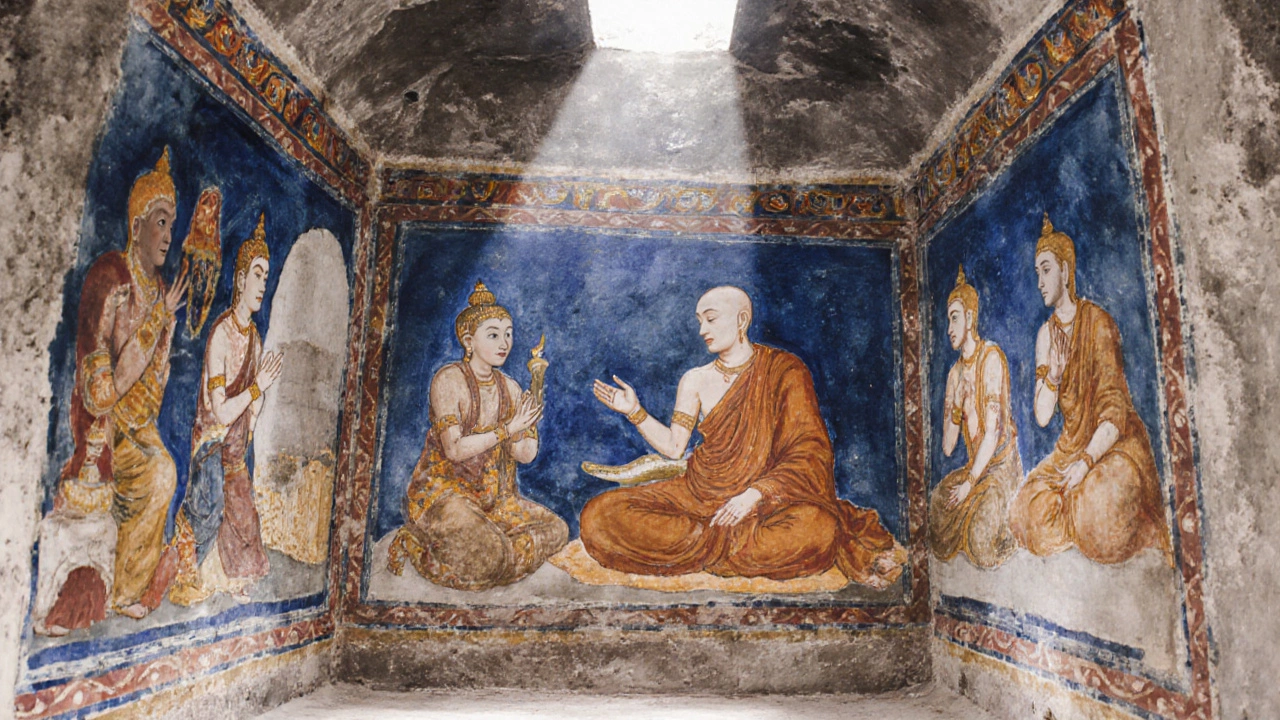
Preservation Challenges and Recent Efforts
Humidity, visitor footfall, and occasional vandalism threaten the delicate pigments. Since 2018 the Ministry of Culture, together with UNESCO, launched the “Ajanta Conservation Programme.” Key actions include:
- Installing micro‑climate monitoring stations to regulate temperature and moisture.
- Using laser‑cleaning techniques to remove soot without damaging original paint.
- Limiting daily visitor numbers to 600 across the entire complex.
- Digital 3‑D modeling of each chamber for virtual tourism and research.
These steps have stabilized the murals, and early reports suggest a 15 % reduction in pigment decay rates over the past three years.
Quick Checklist Before You Go
- Book accommodation in Aurangabad at least 2 weeks ahead (peak season).
- Carry a printed permit if you plan to photograph interior walls - flash is prohibited.
- Wear modest clothing (shoulders and knees covered) out of respect for the Buddhist heritage.
- Plan for a half‑day trek: the main caves are clustered; the farthest stretch (Cave 30) adds an extra hour.
- Check the ASI website for any temporary closures due to restoration work.
Why Ajanta Still Captivates Travelers
Beyond being the oldest, Ajanta offers a rare glimpse into early Indian Buddhist philosophy, artistic techniques, and cross‑cultural exchanges between Indian and Central Asian artisans. The interplay of light and shadow inside the sanctuaries feels almost cinematic, and the silence broken only by occasional chanting creates a meditative atmosphere that modern tourists rarely find elsewhere.
When were the Ajanta Caves first discovered by the modern world?
The caves were rediscovered in 1819 by a British officer, John Smith, after being hidden by jungle for centuries.
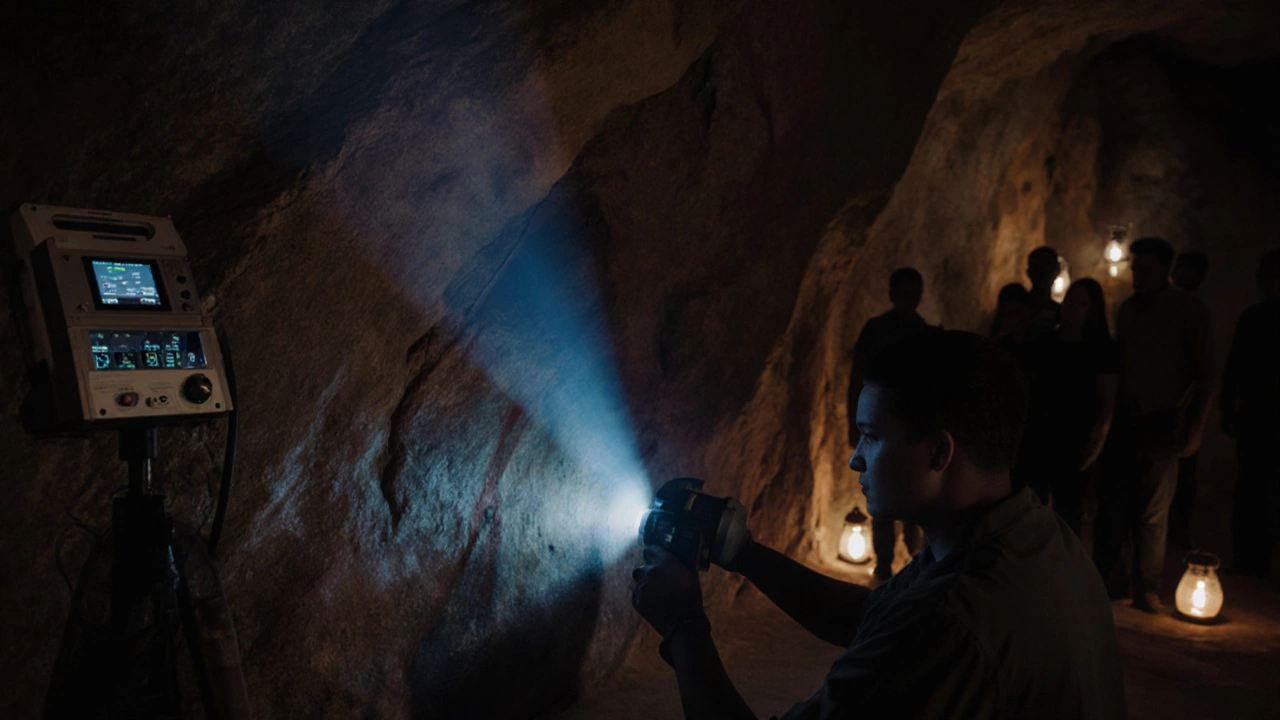
Can I take photographs inside the Ajanta Caves?
Photography is allowed without flash, but you must obtain a permit from the ASI office. Tripods are prohibited.
How long does it take to explore all 30 caves?
A thorough visit takes 5‑6 hours, including short breaks. Most travelers focus on the most famous caves (1‑12 and 26‑30) in half a day.
Is there an entry fee for foreign tourists?
Yes, foreign visitors pay INR 500 (approximately USD 6) plus a separate charge for a guide if desired.
What is the best time of year to visit Ajanta?
October through March offers cool, dry conditions ideal for climbing the gorge and viewing the murals without glare.
